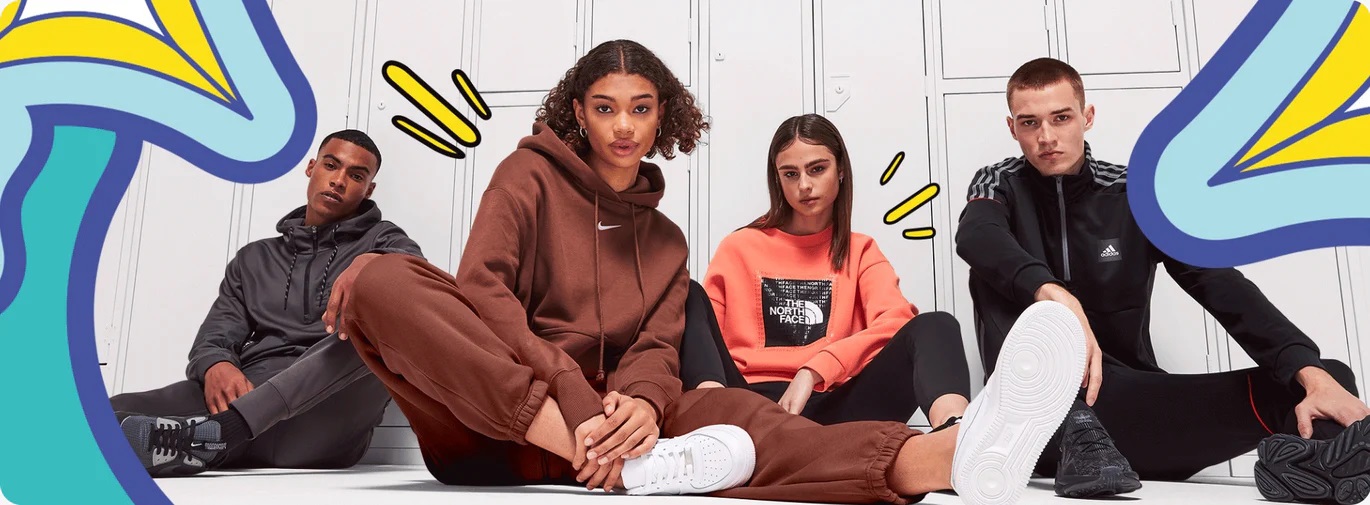The Power of Sports Clothing in Performance and Style

In the world of sports and vigor, your clothing is more than a fashion statement. It’s an essential part of your performance, warmth, and active struggle. As the global fitness industry grows, so does the influence of sports clothing. From gym-goers to pro professionals, the right gear matters. It can affect how you move, feel, and perform. This post will explore how sports clothing has evolved. It must meet both performance needs and style demands. We’ll underline the latest trends and exciting developments in the trade.
The Evolution of Sports Clothing
Sportswear was once all about function. It wanted to turn over adversaries’ warmth, resilience, and stamina. Recognize the big wool robes worn by early 20th-century sports. They were practical then, but modern standards deem them less than ideal. Today, sports clothing like mens tank tops is a perfect mix of function and fashion. It caters to a crowd that wants both performance and style. Brands like Nike, Adidas, Under Armour, and Lululemon have reformulated their products. They associate high-performance elements with sleek looks. Athleisure is a trend where activewear is casual, everyday attire. It has blurred the line between sports and activewear clothing. Now, it is typical to see people in leggings, track pants, and hoodies far from the gym.
Performance Materials
At the heart of sports clothing lies its materials. Modern sportswear’s fabric technology has changed how athletes perform and recover. Here are some of the most distinguished modernizations:
- Moisture-Wicking Fabrics: Sweat is unavoidable when you work out. But it can become problematic if not managed. Enter water-wicking fabrics like Nike’s Dri-FIT and Under Armour’s Heat Gear. These works pull sweat from your skin and lets it evaporate. They keep you dry and reduce the risk of fretting.
- Breathability: Breathable work is essential for regulating body temperature. Mesh boards, vents, and lightweight textiles allow air to flow through the apparel. This keeps you cool during prolonged training sessions.
- Compression Technology: Compression clothing is popular. It relaxes muscles, improves dissemination, and reduces lethargy. Compression garments, like leggings and arm sleeves, boost performance. They also speed up recovery. They fit snugly.
- Stretch and Flexibility: Sports need freedom of movement. Traditional cotton clothing doesn’t cut it. Advanced fabrics like estance and spandex offer the stretch athletes need. They allow for free movement on the track, court, or field. These materials hold their shape after repeated wear and wash. So, they are durable and reliable.
- Anti-Odor and Anti-Microbial Features: Frequent training causes athletes to worry about odors. Many brands now treat their textures with anti-microbial solutions. They rule out the growth of viruses that cause bad smells. This allows athletes to focus on their performance without worrying about odors.
The Rise of Customization in Sportswear
One of the latest trends in sports clothing is customization. Athletes and fitness fans can now customize their clothes to their liking. Customization boosts confidence. It also lets people make outfits that meet their needs. This can range from custom-fitted compression wear to custom team sports uniforms. Also, with the rise of digital printing, brands are offering more made-to-order options. Consumers can choose colors, patterns, and materials. They can create a unique look.
Sustainability
As sportswear gains popularity, consumers seek products. Many sports clothing brands are actually investing in eco-friendly ways and materials. For example, Adidas will use converted polyester in all its products by 2024. Nike’s Flyknit technology decreases waste by knitting shoes from a single thread. Sustainability isn’t about the elements. Brands are also tracking the product’s life cycle. Enduring, long-lasting clothing reduces the need for continual restorations, diminishing the environmental impact. Also, some companies are exploring circular business models. They are offering clothing recycling programs to reduce waste.
Fashion Meets Function
While performance is key, athletes also want to look good while they train. Bold styles, bright colors, and sleek designs are now in. Sports clothing is a fashion statement. Brands are using streetwear influences. They are synthesizing sportswear that goes from the park to everyday life. Concerts between sportswear giants and high-fashion makers are raising the bar. Lessons comprise those of Adidas x Kanye West (Yeezy) and Nike x Off-White. These collaborations mix luxury with sportswear. They make great-performing, robust clothes that are also of interest in fashion. Athletes like LeBron James, Serena Williams, and Cristiano Ronaldo have defined sports fashion. Their personal style choices shape buyer preferences. They have fused fashion and function in sportswear.
Conclusion
Sports clothing has come a long way from its original development. Today’s athletes want more from their clothes than ever. They demand peak performance, comfort, and a stylish look. New fabric technology, more customization, and an eco-focus are evolving sportswear. The right sports clothing can make all the difference. This is true for both elite athletes and wrestlers who take part for enjoyment. So, next time you train, remember: your gear plays a role. It affects both your look and your athletic ability.